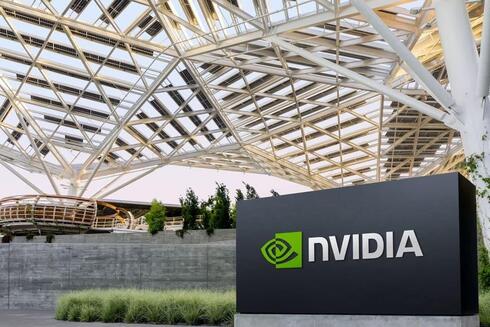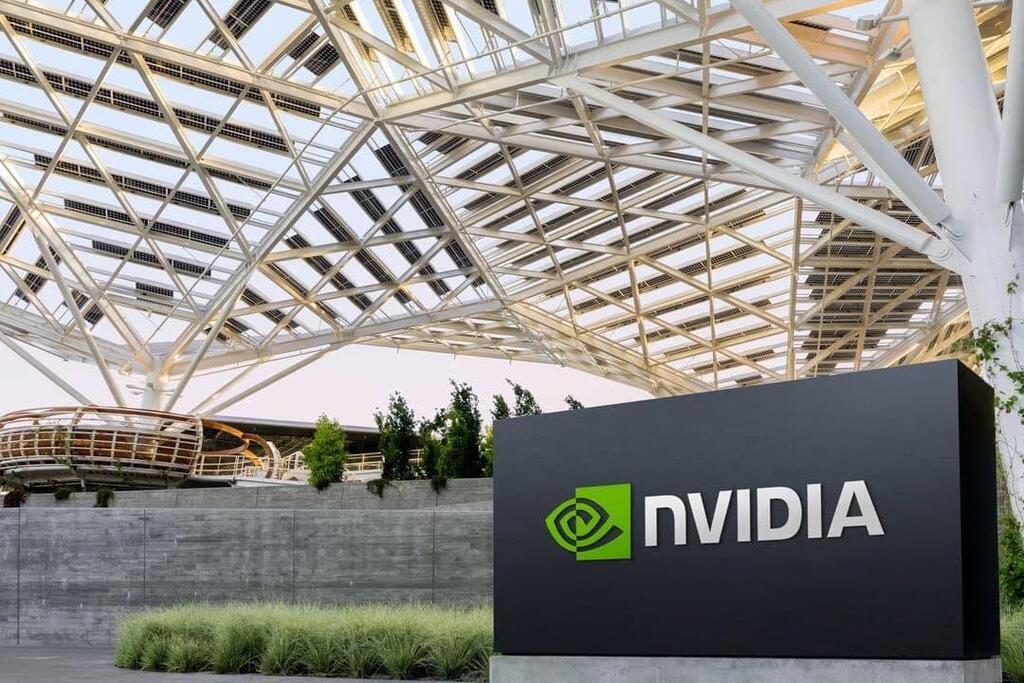
How Nvidia became "Taylor Swift for investors"
The chipmaker posted phenomenal results, adding an unprecedented $277 billion to its market cap in a single day, and pulling Wall Street to new highs. Could the Nvidia effect offset the postponement of interest rate cuts in the US?
Wall Street has a new king - Nvidia. And as it has already been dubbed in the American market, Nvidia has become the "Taylor Swift of investors". The chipmaker, which is at the forefront of the artificial intelligence (AI) revolution, managed to stun analysts, investors and markets on Wednesday night when it released its financial reports for the fourth quarter of 2023 and for the full year. Everyone seemed to be rubbing their eyes as they stared at the numbers.
Nvidia presented revenues of $22.1 billion in the quarter - 3.6 times the revenues of $6 billion in the last quarter of 2022. The net profit, not based on the accepted accounting rules (non-GAAP) - that is, excluding various items such as capital compensation for employees - was $12.8 billion, 6.1 times the net profit in the corresponding period, which amounted to $2.1 billion. Even compared to the previous quarter, the third quarter of the year, this is a growth of 20%-30%. No small thing when it comes to a company whose revenues in the previous quarter were already in the high double digits of billions of dollars.
In 2023 as a whole, Nvidia presented revenues of almost $61 billion, more than two times the revenues in 2022, which amounted to approximately $27 billion. Non‑GAAP net profit jumped nearly four times and stood at $32.3 billion. The results, of course, were higher than the analysts' expectations.
The rates of profitability that Nvidia presents are exceptional by any standard. The rate of net profit from revenues was about 50% in the summary of the year and almost 58% at a quarterly level. This is a significant leap for the company which presented a profitability rate of 10% in 2022, and it is also an unusual rate in relation to the industry. Intel, for example, in its good years, presented a profitability rate of about 30%.
So how did it happen? In 2023, artificial intelligence took the world by storm with OpenAI's ChatGPT and with a series of other developments that make use of this technology. To run the models that enable the use of AI, advanced chips are needed, which are produced by Nvidia, the dominant player in the field. The unprecedented demand for chips boosted Nvidia's results and led many players to stock up ahead of time with a large inventory. Thus, for example, at the beginning of the year the CEO of Meta Mark Zuckerberg said that the company he heads intends to equip itself with no less than 350,000 H100 AI chips produced by Nvidia. This is an investment of billions of dollars. And Zuckerberg is not the only one. Many are flocking to Nvidia for chips.
The phenomenal results of the company, which is managed by founder Jensen Huang, led to the fact that in trading on Thursday the company's stock jumped by 16%, which added $277 billion to its market cap in one day - the largest daily value increase in history. Nvidia dethroned Meta, which added almost $197 billion to its value in one day when it published its reports at the beginning of this month.
To illustrate, Nvidia's increased value in shekel terms is greater than the combined market value of all the companies traded on the Tel Aviv Stock Exchange. Dan Ives of WedBush called Huang "the godfather of AI", adding in a conversation with Bloomberg that "this is the quarterly report heard around the world. This AI party is just getting started in terms of peak demand. And this wave is reaching the rest of the tech sector and will continue to fuel this market's boom. This is the Taylor Swift moment of the tech markets. Right now, Nvidia is the only game in town.”
According to Byron Deeter of Bessemer Venture Partners, Nvidia's growth, even against the background of the rapid expansion of the AI market, has been "impressive to watch." "Companies that want to operate in the field of AI will continue to need Nvidia chips," he said in an interview with CNBC. "Simply put, artificial intelligence is the next trend in hardware. It's the next horizon in cloud computing. It will create massive demand for many years to come. These software companies don't build their own hardware in most cases, so they depend on large-scale hardware vendors to drive this revolution. And so, the demand curve in the private sector, which is a leading indicator of the demand for these chips, is only increasing."
Nvidia may be the only game in town, but it's pushing the rest of the market up with it. Since the beginning of this year, the company's stock has risen by nearly 64% and in the last 12 months it has jumped by 238.5%. This has helped the Nasdaq index rise by 8.3% since the beginning of the year and by about 40% in the last 12 months.
To understand how much the large technology companies, and primarily Nvidia, influence the entire market, you can check the differences in returns between the S&P 500 index, which includes the largest companies in the U.S., and the same index with equal distribution - that is, when companies performances are given the same weight in contrast to the standard index that gives different weight to companies according to their size. The standard index has increased by 7.3% since the beginning of the year and by 28% in the last 12 months. Equally weighted, the increase since the beginning of the year is only 2.5% and 10.2% in the last year.
How Nvidia's rise is benefitting Israelis
A significant number of Israelis are also benefiting from the dizzying rise in Nvidia shares. Nvidia purchased the Israeli chip manufacturer Mellanox in 2019 for $6.9 billion. Mellanox employees became employees of Nvidia, which established its development center in Israel on the basis of the company, and many of the 3,000 employees in the center today received stock options during these years. When Nvidia acquired Mellanox, in what was one of the largest exits in Israel, the company's market value was approximately $530 billion. Today, the value of Nvidia is about $2 trillion.
Nvidia's surge challenges two fronts: the pricing front of the big tech giants, and the macro front that is used by many investment managers to formulate investment theses. Nvidia is not the only company among the technology giants that is part of the AI revolution. Microsoft owns 49% of OpenAI and already uses the technology in its products, as does Meta, and both, with an emphasis on Meta, presented strong reports. Together with Nvidia's report, which surpassed the other reports, many in the market have already estimated that the pricing of these companies, which trade at a profit multiple of about two times the average of the companies in the S&P 500, is no longer necessarily particularly expensive, and this is against the background of the possibility that they will continue to show a significant jump in results thanks to the artificial intelligence revolution. Thus, Nvidia predicts that in the current quarter it will show revenues of about $24 billion, $2 billion more than the previous quarter.
Secondly, the fact that Nvidia and its members in the prestigious club are pushing the markets up, has resulted in estimates among analysts that the markets can continue to move up even if the Fed takes longer than expected to lower interest rates, despite the drop in inflation. If at the beginning of the year many estimated that the interest rate would drop already in March, it is now being estimated that a first lowering won't come until May-June. On the face of it, this should pour cold water on the stock market. But perhaps Nvidia and the other tech giants are even stronger than Fed Chairman Jerome Powell in determining the direction in which the markets are moving.















